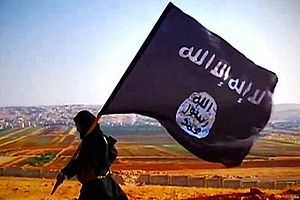Some good Central Asia reads for the weekend:
First, Joanna Paraszczuk has an excellent report on a Taliban-aligned Uzbek militant fighter in Syria who reached out to RFE/RL (via Whatsapp of all methods) specifically to express his group’s opposition to ISIS. The man, who claimed to be a member of Imam Bukhori Jamaat, told RFE/RL “IS is a group with a false ‘aqidah’ [Islamic creed]. Its leader [Abu Bakr] al-Baghdadi is a person who likes to indulge in pleasures, he is a depraved person.”
While the militant’s comments have to be taken with all due skepticism (for example, he boasts that Imam Bukhori Jamaat has 6,000 Uzbeks, a number that Paraszczuk notes is nearly impossible to independently verify), it does help illustrate the complex array of militant groups fighting in Syria to which Uzbeks from throughout the former Soviet Union are drawn.
Next, a brief from PONARS Eurasia by Caress Schenk looks at labor migration within the Eurasian Economic Union. Even established free labor zones, like the European Union, face some difficulties regarding actual freedom of movement between countries, but the Eurasian Economic Union countries have a history of domestic regulations blocking free movement even when multilateral agreements provide for it:
Despite the seeming advantages of the [EEU] treaty, the language of the agreement generalizes enough to allow for the development of alternative controls on migrant labor. Multilateral international agreements, like the CIS visa-free agreement of 1992, have never been the primary governing documents of labor migration in Russia or Kazakhstan. Rather, labor market controls and regulation of the terms and period of legal stay in host countries have been governed by bilateral agreements and domestic legislation.
Since the advantages of membership for countries like Armenia, Kyrgyzstan, and Tajikistan (which has not made significant movements toward joining yet) are directly tied to migrant laborers being able to access work in Kazakhstan and Russia, this issues is core to their understanding of the union.
Lastly, to fill out your weekend the Guardian has a handy guide to several modern Kazakh cinematic greats. Kazakh films have a fairly low international profile, Travis Crawford writes, but that hasn’t stopped Kazakh directors from making interesting, stunning, films:
Though a very diverse group, today’s directors share uncompromising and austere formal approaches, and common thematic concerns, including the crippling poverty that the country has endured since the fall of Soviet Union.
Sadly, the article doesn’t say how you can watch the films mentioned, but the trailers and clips will entice you to begin a search for the nearest festival screening Kazakh films.
































